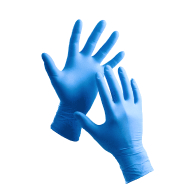DS Safety Prosafe® Type 2 Coverall, MP Film, Collar, Sleeves, Legs
Product description
Related Content
Product features:
- One-piece protective coverall
- Antistatic, microporous film membrane
- Reliable full-body protection for everyday work
- Three-piece crotch insert for appropriate durability and fit
- Double covered zipper
- Suitable for work in cleanrooms - class ISO 7
Technical data:
- CE Category III
- Type 5B and 6B
- Standards:
- EN 13982-1: Particle-tight
- EN 13034: Limited splash-proof
- EN 1149-5: Antistatic
- EN 14126: Protection against infectious agents
- EN 1073-2: Protection against radioactive particles
- EN 369: Protection against oils and lubricants
Indicates the jacket's primary hue, affecting visibility, practicality, and compliance with workplace safety standards or team identification.
Defines the neck area design that affects weather protection, comfort, and compatibility with safety equipment like helmets and other PPE.
- Electrical Protection
- Chemical Resistance
Request a free sample
Test first and buy later. Visit any product page to request your free sample.
Standards and labels
EN 1073-2:2002 is a European standard that defines the requirements for measuring and evaluating the resistance of textiles to penetration of airborne radioactive particles. The standard includes procedures for measuring the ability of textile materials to prevent the penetration of radioactive particles through the fabric. The performance requirements specify the conditions for testing, as well as the evaluation criteria for determining resistance. Possible test results include a rating on a scale of 1-5, with 5 indicating the highest level of resistance to particle penetration.
EN 14126:1999 is a European standard that sets guidelines for the protection of medical clothing against infective agents. It specifies the minimum requirements for the protection of medical clothing, including the material properties, design, and construction of the clothing. Testing includes things like barrier resistance, penetration resistance and filtration efficiency. Possible test results would include pass or fail based on whether the clothing meets the safety and performance requirements outlined in the standard.
EN 1149-5:2008 is a European standard that specifies the requirements for electrostatic dissipative (ESD) gloves. The standard defines performance requirements for material, design, and testing of ESD gloves. The gloves must be able to effectively discharge static electricity and protect the wearer from ESD. Testing includes measuring the surface resistance of the glove material. Pass/fail results are based on the gloves meeting or not meeting the specified requirements.
Test results
Material Performance TestedThe EN 1149-5:2008 standard specifies the performance requirements for material used in protective clothing designed to avoid incendiary discharges. The test result Tested means that the material has undergone relevant evaluation procedures to confirm its static dissipative properties. These tests generally involve measuring the electrical resistance of the material in ohms (Ω) to determine its capability to dissipate electrostatic charges and prevent sparking that could ignite flammable substances. The practical implications of this result for the respective product category (like protective workwear for use in explosive atmospheres) are significant, as it ensures that the clothing provides a level of protection against electrostatic discharges, potentially reducing the risk of fire or explosion in environments with flammable gases, vapors, or dusts.
EN 13034:2005 is a European standard that specifies the requirements and test methods for Type 6 protective clothing designed to provide protection against liquid chemicals. This standard sets criteria for the fabric's resistance to penetration by liquid chemicals and establishes guidelines for the overall design and construction of the clothing. It ensures that Type 6 protective clothing offers reliable protection for workers in industries where they may be exposed to liquid chemical hazards, but it may not be suitable for protection against airborne particles.
Test results
Liquid Chemical Protection Type 6EN 13034:2005 specifies the requirements and test methods for protective clothing that provides limited protection against liquid chemicals, designated as Type 6. The 'Type 6' classification indicates that the clothing has been tested and found capable of resisting light spray and minor splashes of liquid chemicals. This test method assesses the fabric's ability to prevent penetration from a synthetic blood solution sprayed at the garment at different angles and pressures, simulating realistic conditions where accidental chemical splashes might occur. Protective clothing that achieves this classification is essential for workers in industries such as chemical manufacturing, painting, or pesticide application, where there is a risk of exposure to harmful liquids but full immersion is not expected, thus enhancing worker safety by providing sufficient protection in low-volume chemical exposure scenarios.
EN ISO 13982-1:2004 is a European standard that specifies the requirements and test methods for Type 5 protective clothing designed to protect against airborne solid particles. It sets criteria for material resistance and construction to prevent penetration of hazardous particles such as dust, fibers, and powders. The standard ensures that the garments provide effective protection in industries where workers may be exposed to such particles, but it should not be relied upon for protection against liquid chemicals or vapors.
Test results
Airborne Solid Particle Protection Type 5PPE stands for "personal protective equipment." PPE Category 3 refers to equipment that is complex and provide the highest level of protection such as powered respirators, SCBA, and full body suits. In Europe, PPE Category 3 must meet certain safety standards set by the European Union, which means that it must be designed and manufactured to protect the user without causing harm. Companies that make or sell PPE must prove that it meets these standards. They also must have a quality management system in place, have to be audited regularly by a notified body and have to have a technical documentation.
CE Marking is a label that shows a product meets certain safety and environmental standards set by the European Union. To get the CE Marking, a company must test and certify their product meets these standards. CE Marking is required for many products sold in the EU, including electronics, machinery, toys and medical devices. It helps ensure that products are safe for consumers and the environment, and allows for easy trade within the EU.
DS SafetyWear delivery terms
Free delivery for all DS SafetyWear products
1 779,94 kr
Price per 50 pcs
35,60 kr / piece
Shipping fee is 60,00 kr for orders under 1 650,00 kr
A package contains 50 pieces
Need larger quantities?
Other products you may like
Recently viewed
Need help?
Get help from our experts
Other products you may like
Similar products you may like
Recommended for you
DS SafetyWear
Delivery time: 4 business days
Supplier shipping fee 60,00 €
Free shipping on orders over 1 650,00 €



Find +150,000 products from hundreds of brands
Autonomous sourcing platform
The most efficient way to source and order supplies for your operations
Sourcing
Ordering
List products you’re looking for and we’ll find the best products and prices for you – all for free.
Need help?
Get help from our experts
